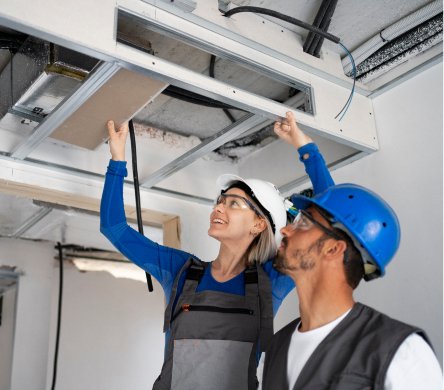Commercial HVAC trends
- admin
- September 9, 2024
- No Comments
1. Connectivity and Data to Improve Control
The way buildings are constructed today is a bit different. Many contractors and architects are designing with “green” thinking in mind, which has led to an influx in the installation of smart meters, thermostats, and sensors to help ease power costs.
Not only are building owners able to control temperatures, but they’re able to control the humidity levels and airflow as well.
They’re doing this all from their desktop, tablet, or smartphone. How is this possible? Through robust Wi-Fi-connected software. Now, landlords, owners, property managers, and maintenance techs can easily monitor and control the atmosphere of a building.
2. Eco-Friendly HVAC Systems Are in Demand
Green initiatives are big business today. Everyone’s looking to save money (and the world). So, there’s an uptick in the trend for environmentally-friendly HVAC units, which includes the use of solar panels and wind turbines to reduce energy costs.
The use of geothermal heating and cooling methods is also on the rise, which eliminates the need for petroleum-based electricity. Instead, these heat pumps use the ground and water sources, such as ponds, to generate energy to heat and cool buildings. Some buildings incorporate a mix of gas and solar, allowing owners to switch between the two seamlessly to control power costs.
There are already thermally-driven ACs in development.
3. Software Automation Implemented to Improve Business Functions
The days of operating your HVAC company manually are over (or at least, they should be). There are various software tools and platforms HVAC companies are using to enhance their sales, customer service, and technical support.
Other systems enhance invoicing, estimating, payments, routing, and communications with clients.
Some are adopting online project management tools, such as Trello and Google Suite, to create checklists and assign jobs to workers. When equipped with durable nameplates, equipment, components, and locations are quickly identified to streamline task management and resource allocation. Implementing such tools allows HVAC businesses to operate more efficiently by ensuring their clients are taken care of and project accountability is maintained.

